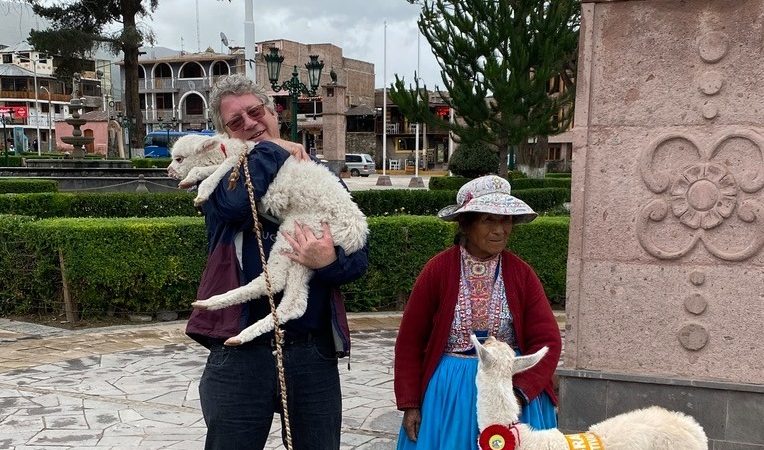It was a long day with a lot of travelling and sight seeing. I should mention a few of our group have fallen ill – air sickness and/or bad stomach bacteria. We have headed into higher altitudes. The hotel has oxygen tanks to help.
Jack, the 93 year old, had to go to the hospital. His daughter says he is better now and on solid foods. The doctor will determine whether he can join us.
We visited a couple of lookout points in Arequipa. Then there was the long bus ride to the city of Chivay. Along the way we drove through a protected area for Llamas, Alpacas and Vicunas
In the morning we took in another tour of Arequipa to explore the architecture. Arch framing the volcano in to background. The volcano last erupted 570 years ago. It was only smoke and ash – nothing destroyed.

A panoramic showing the city, the volcano.

The volcanic rock is strong yet it is easily carved as shown with this church facade. The church was built in 1750 yet the carvings are hardly worn down.

This was the square in front of the arches. It was not a busy place. There were a couple of dogs laying in the sun.
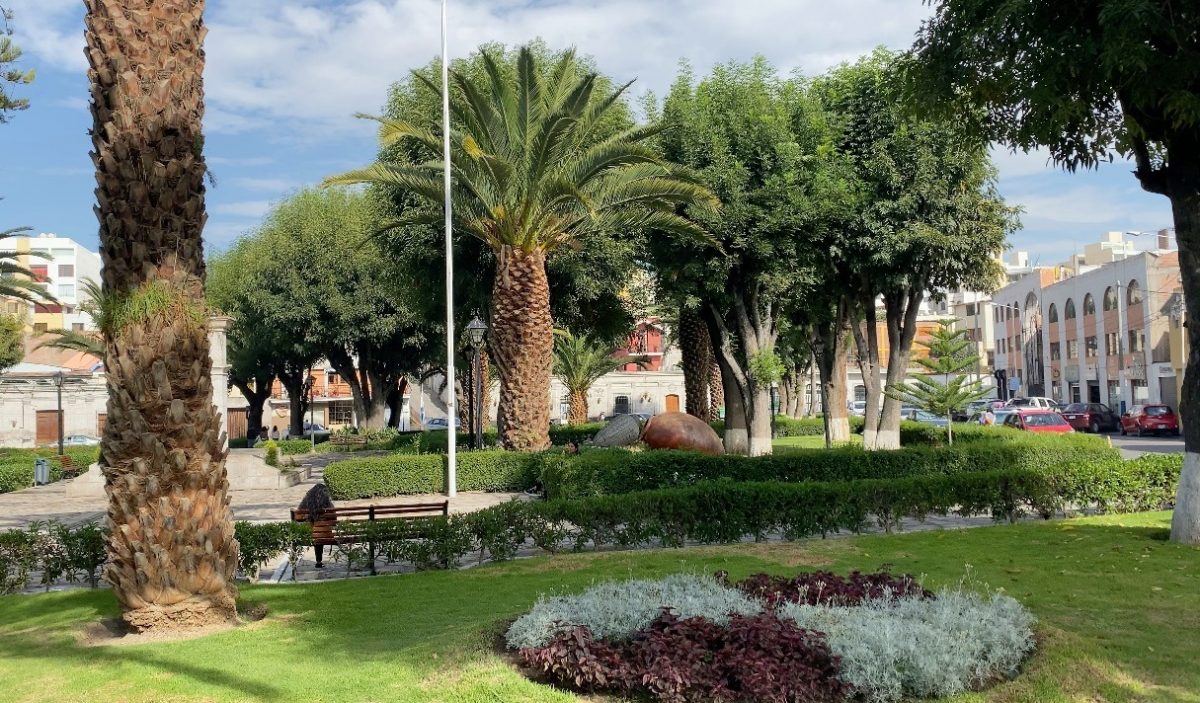
A view of the green valley. We will see a lot of green because it is the rainy season. Between July and November, the dry season, the colors are yellow and brown. The volcano left and Pincho Pincho mountain on the right.
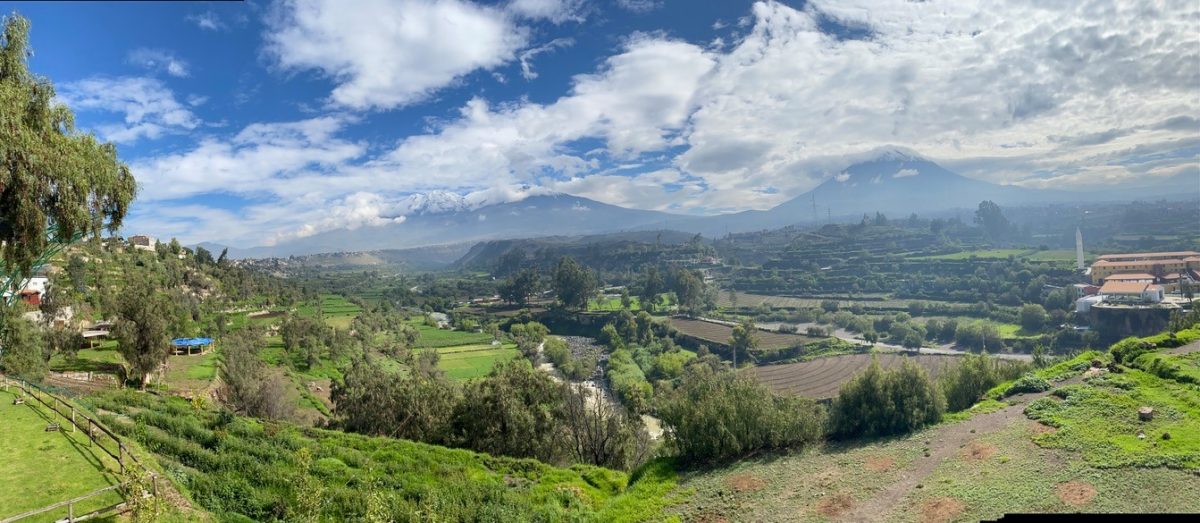
Squatter houses on the side of the mountain. It is crown land so they don’t have to pay taxes. Many rural people coming to the city for work.
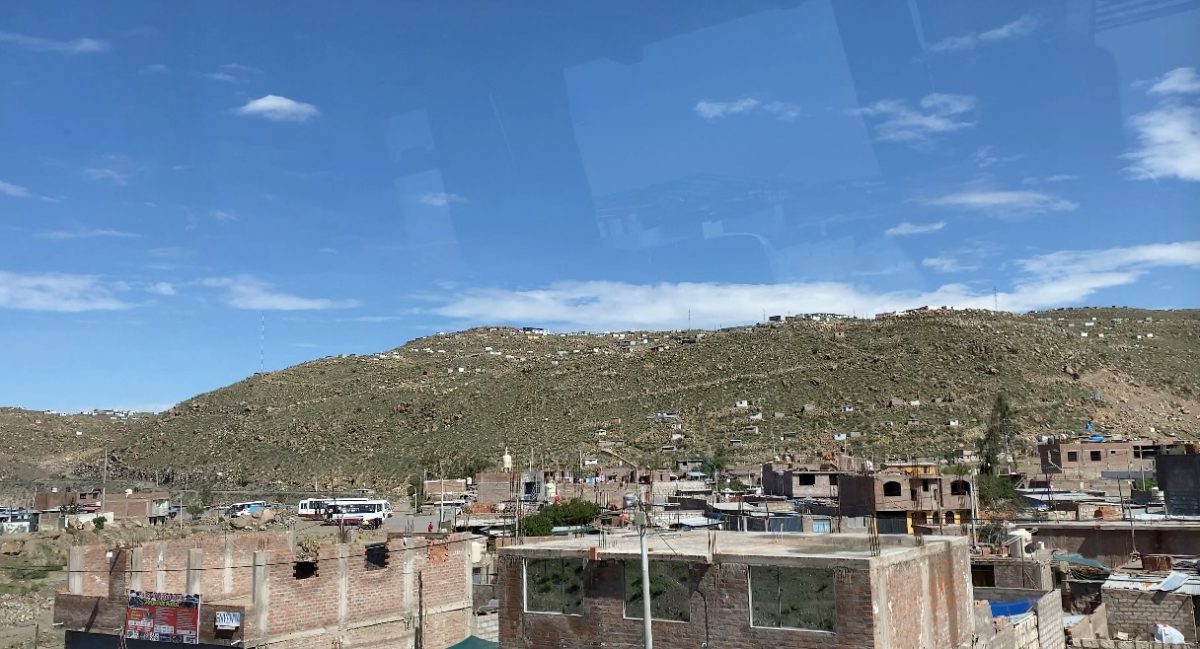
On our way to Chivay we stopped at a little place for tea, El Zorro. This little one got into a panic when I came around the corner. Tried to escape by going up the ladder. It was an out of the way, rural place but had fresh herbs and tea leaves. Plus their pets were out an about.
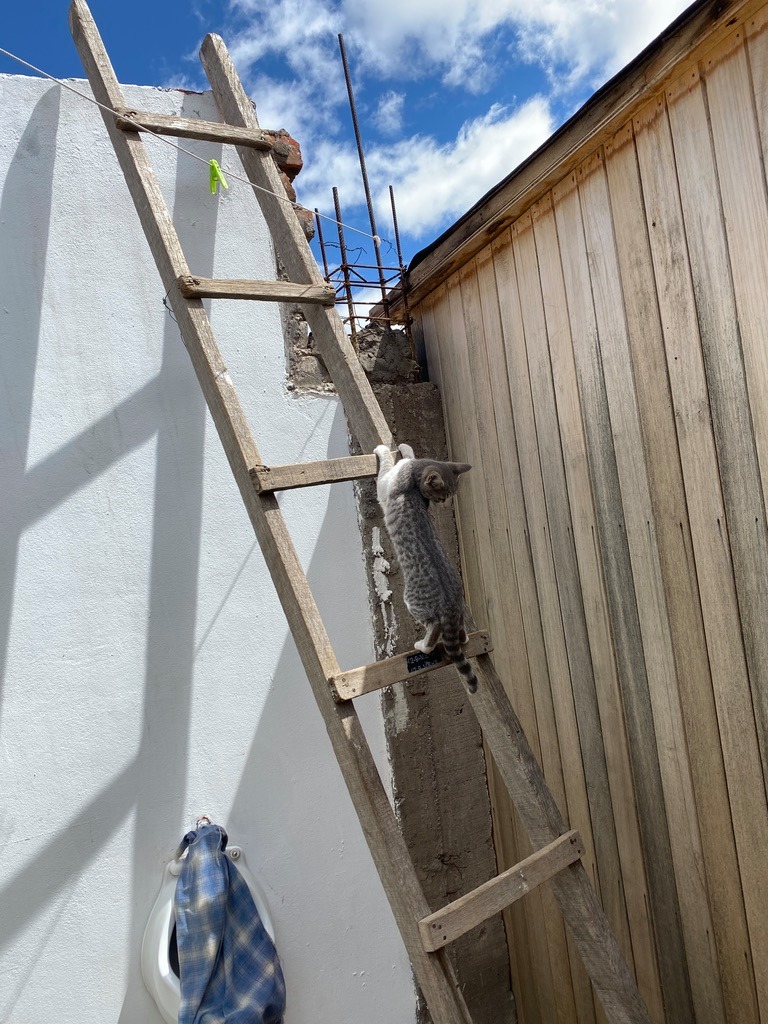
This guy came ambling out of the grass with something in his mouth. He came up to me, laid down and showed me his delicious bread.
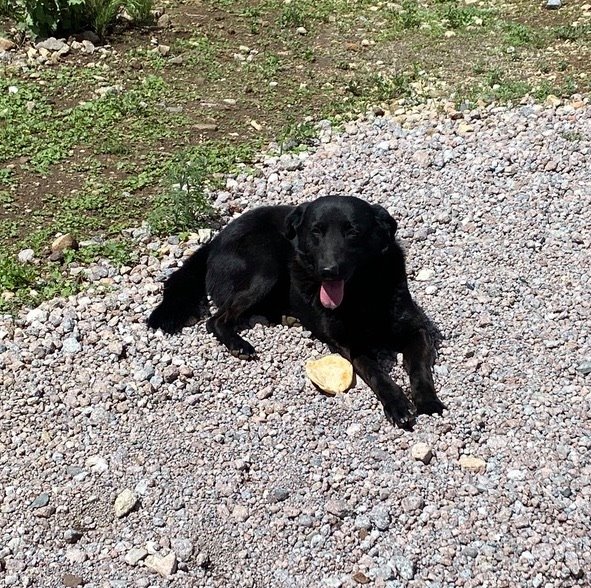
The menu. I ordered the Andean Tea special.
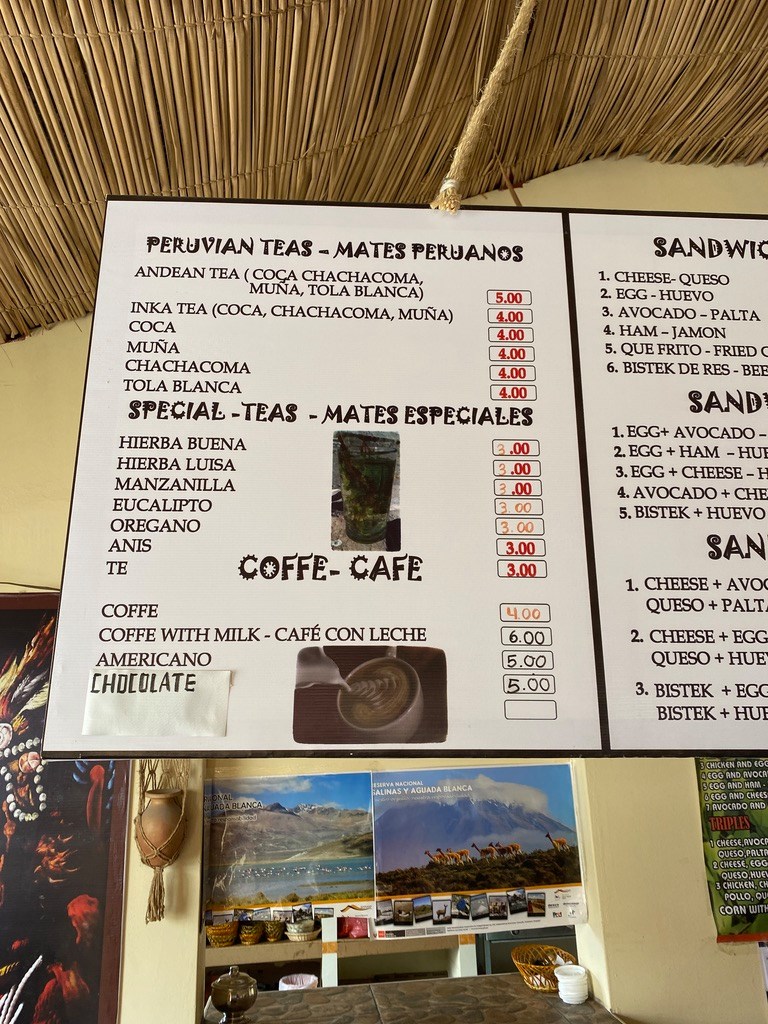
The herbs used in the Andean Tea and an explanation on how they help the body and mind.
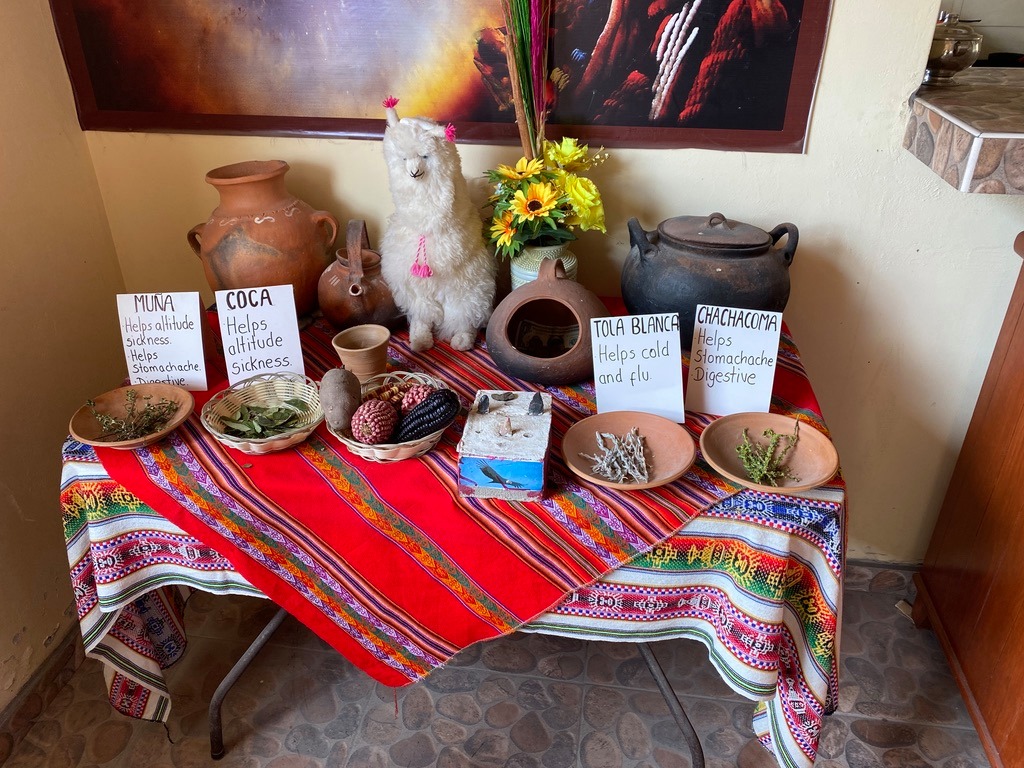
It may seem to be just a glass of tea but the presentation is impressive. I took it out side and did a walkabout while it steeped.

A panoramic view of the beginning of the Colca Valley between Arequipa and Chivay.
Back in the bus an on our way. We were in farming country. Alpacas and Llamas eating the soft grass – only available in the rainy season. Fortunate for me to be able to get this photo.
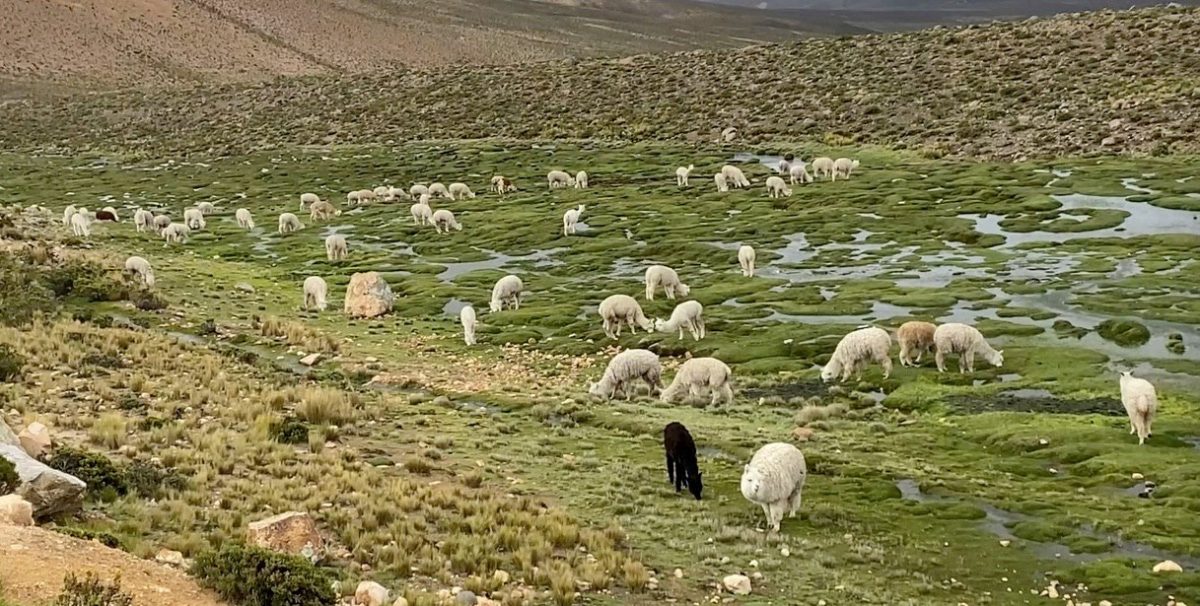
The soft grass is only available in the rainy season so you would not see this picture in the May – November season. Their teeth grow quickly so they need to eat a lot of grass to grind them down.
A wet area used by the Vicuna. Peru has 4 camelid species, The Llama, Alpaca, Vicuna and Guanaco. The Vicuna fur is the most valuable because you only get 300 grams per shaving.
Our guide explains how the Andean woodpecker survives without trees.
The first glimpse of the Colca Valley. This is about 2000 metres. We will be driving up to Colca Canyon, the highest point – 4,900 meters but won’t be stopping. We will stop on the way back once we have acclimatized to the low oxygen.
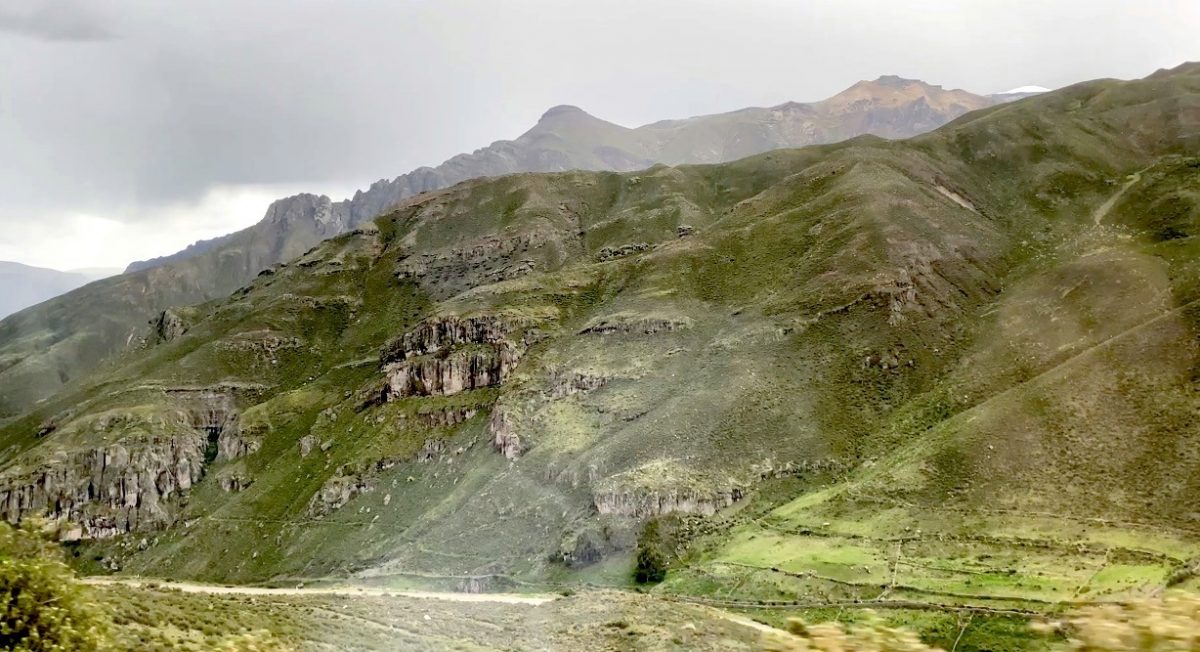
Arrived in Chivay where our hotel is. We went to a restaurant that had a buffetl lunch. They wash all the fruits and vegetables in spring water – which is why our tour guide brought us here.

A woman in traditional dress for this area. For 1 Sol (the Peruvian dollar) I could have my picture taken. Natalia, my tour guide, asked the woman if I could hold the baby Alpaca. She said yes and I gave her 2 Sol.

I watching the signals to see if he will let me. You can tell by the look on his face he’s not quite sure. But he is near mama so he allowed me to lift him.

After a few belly rubs, he is okay with me holding him.

I think the woman either thinks I’m taking up too much time or I’m going to take the baby back to the hotel. She was happy with the extra Sol and thanked me.

It had been a long day so back to the hotel and an earlier night. Tomorrow we see condors and walk around the highest point of Peru.
